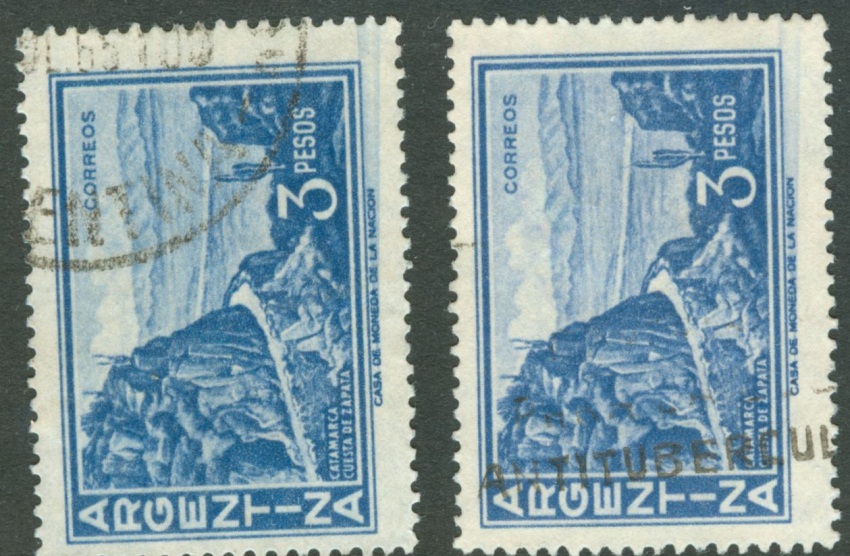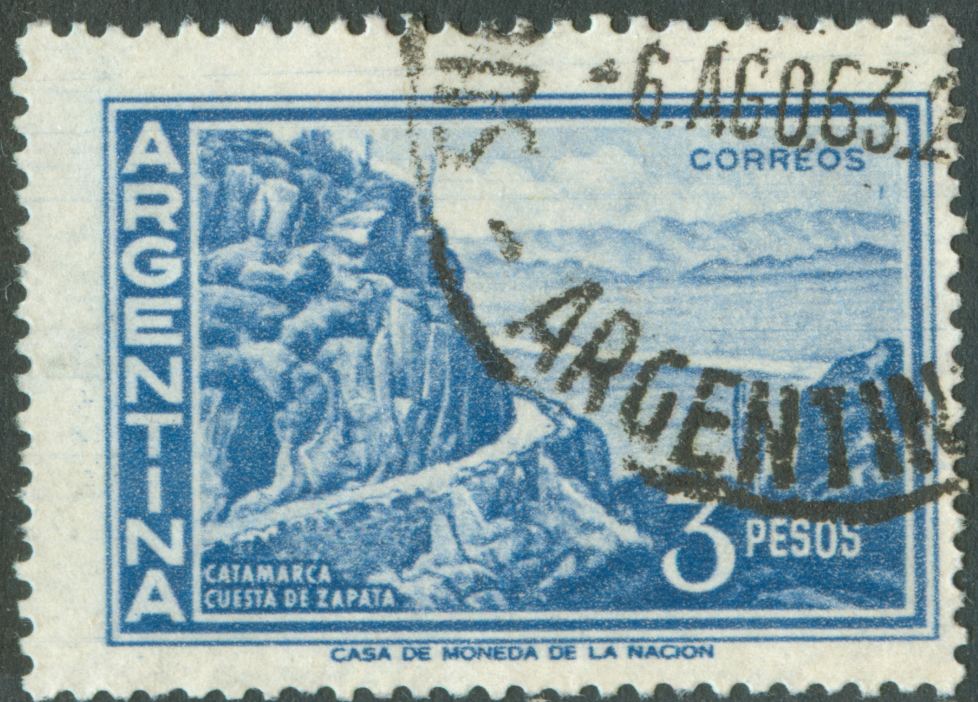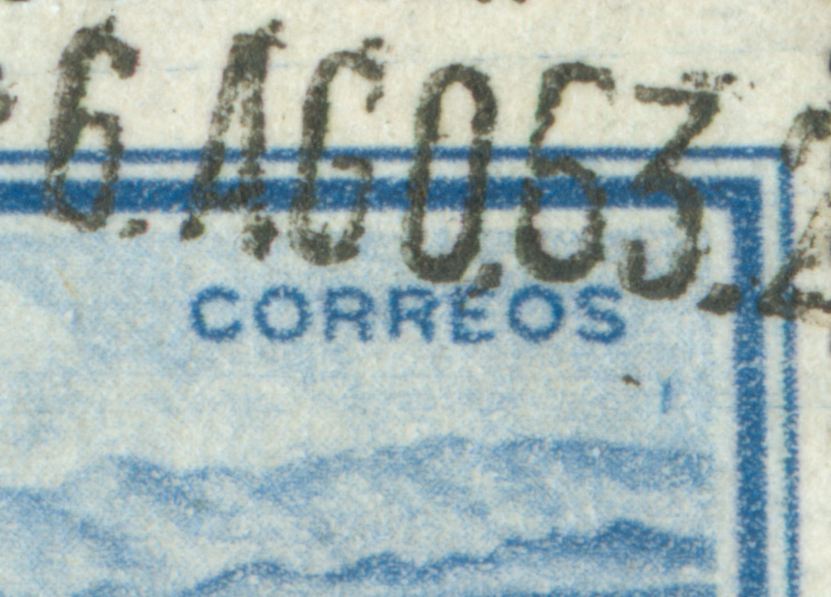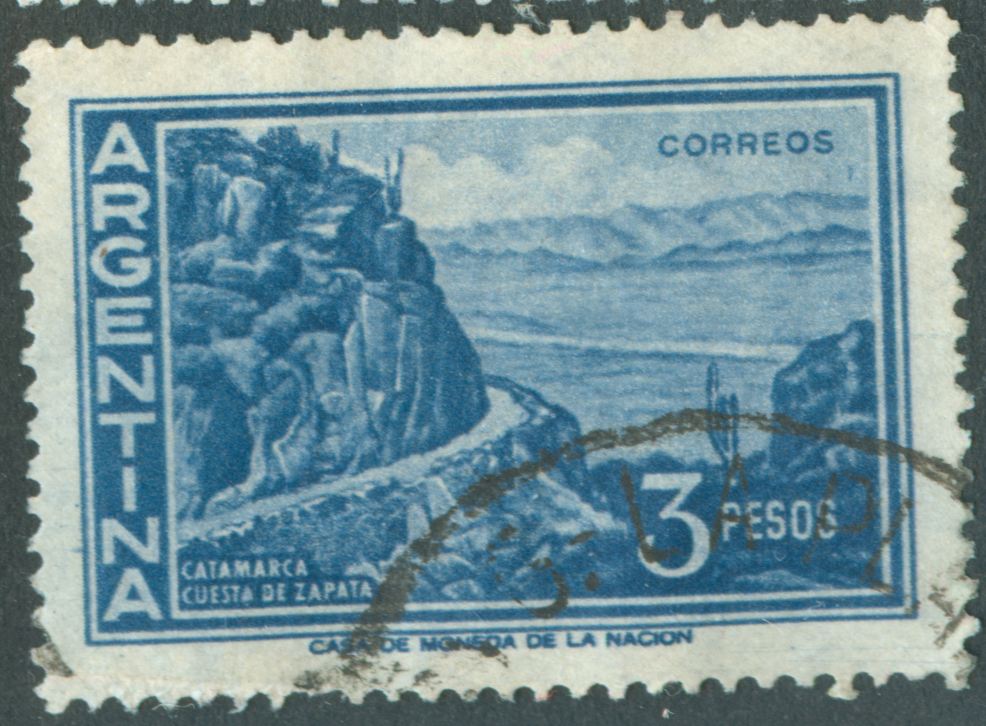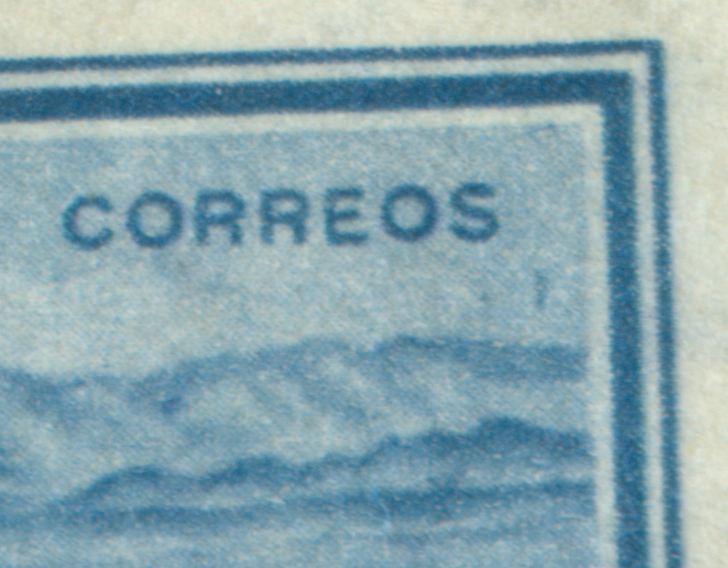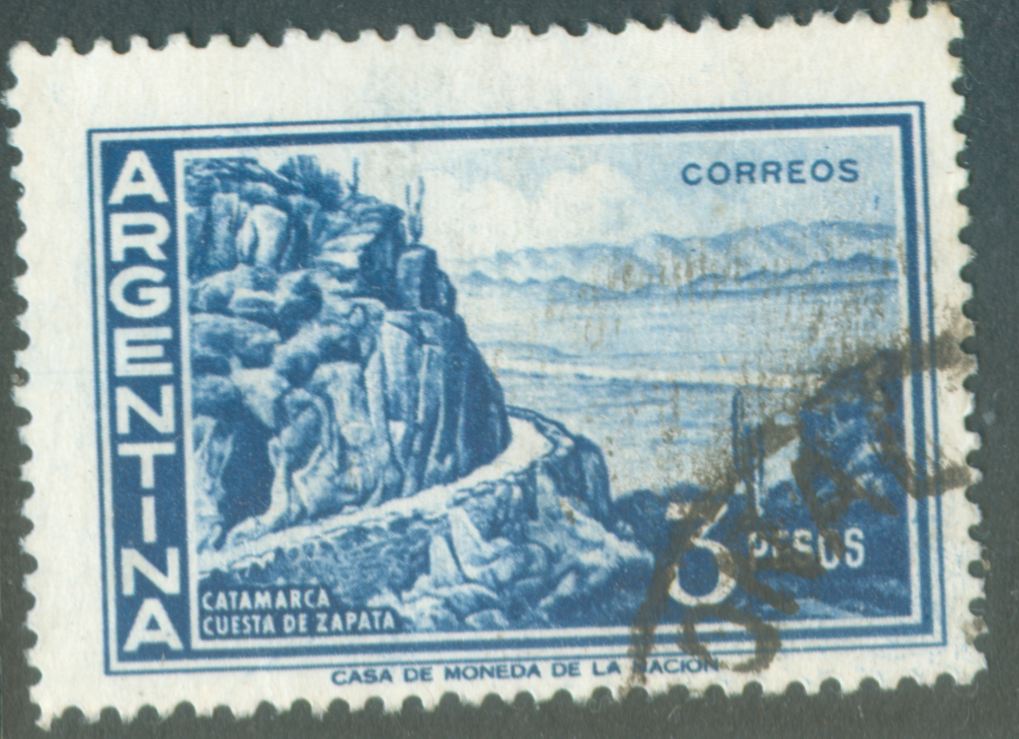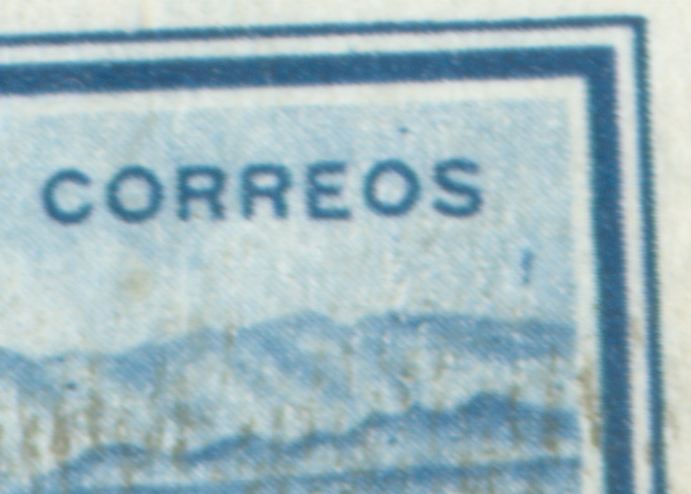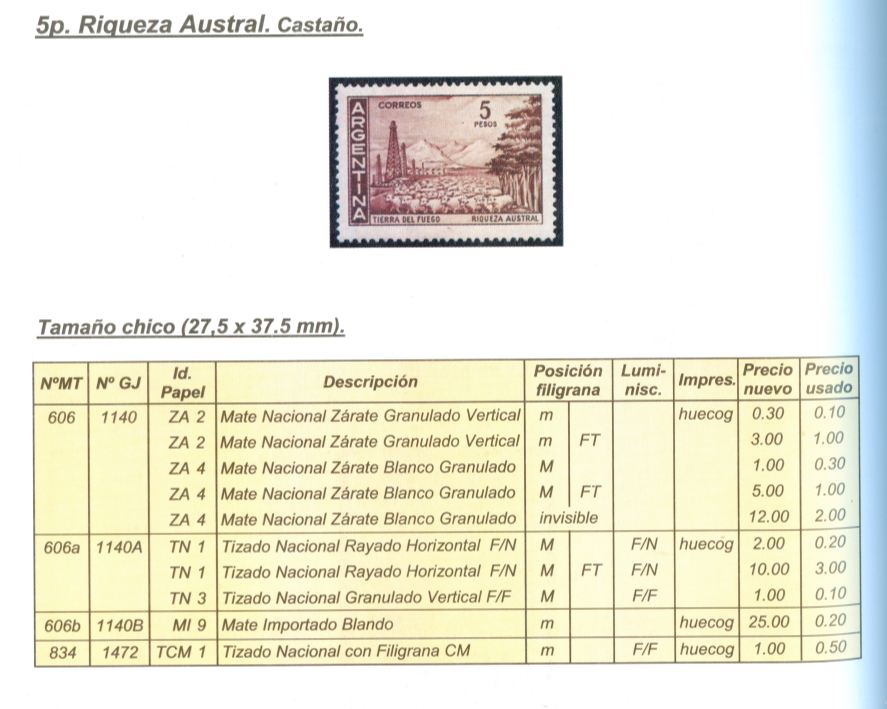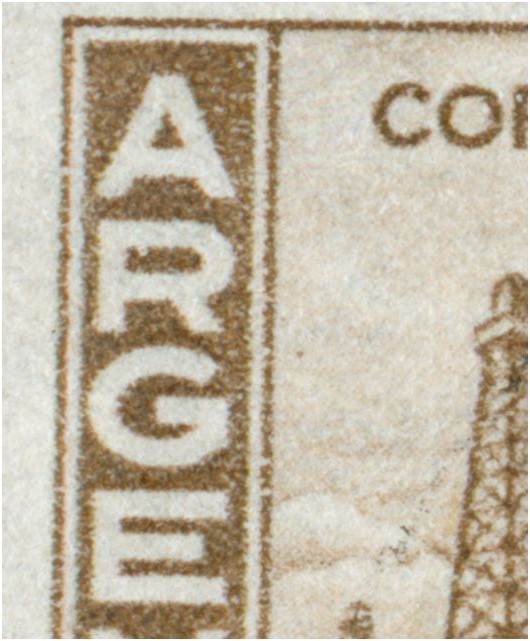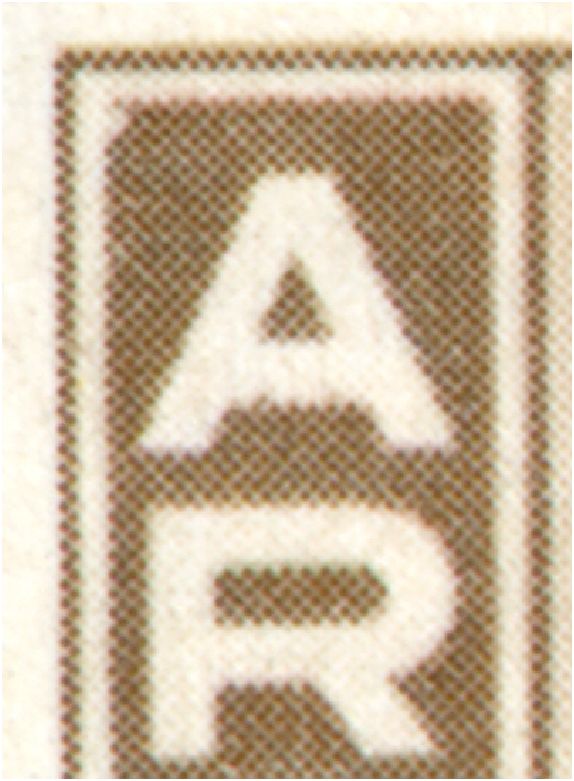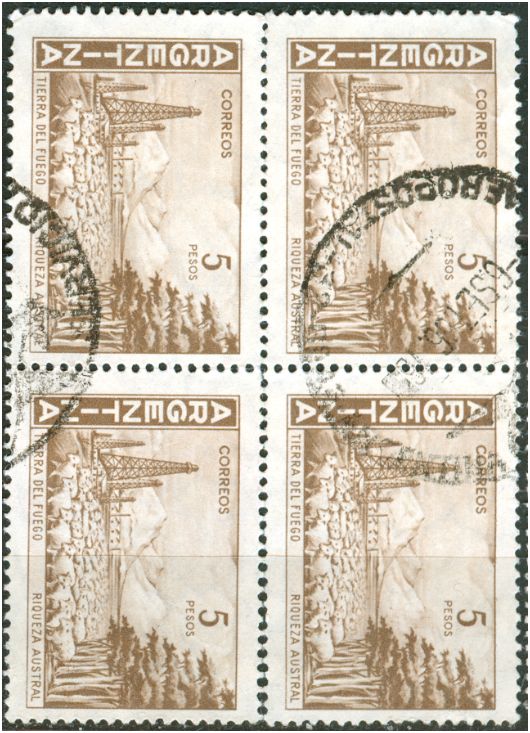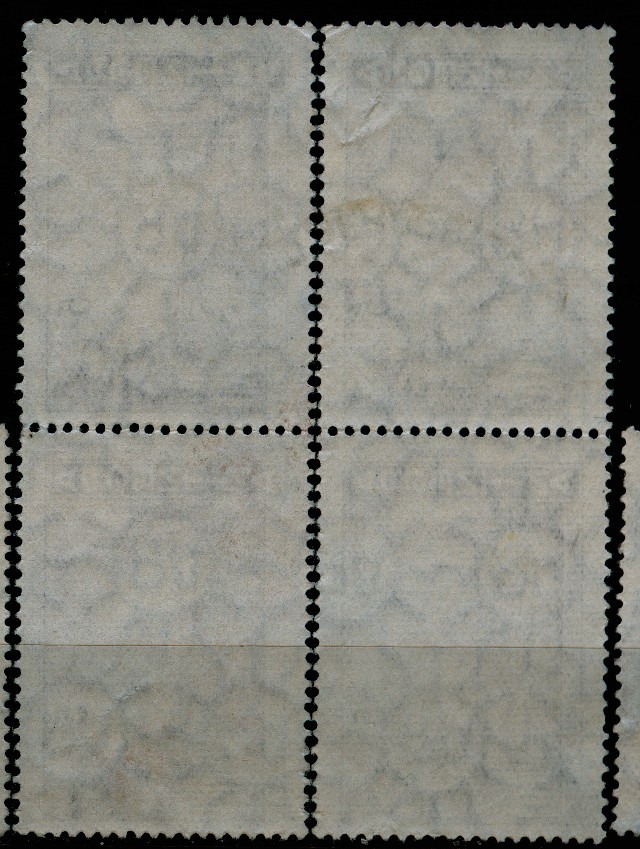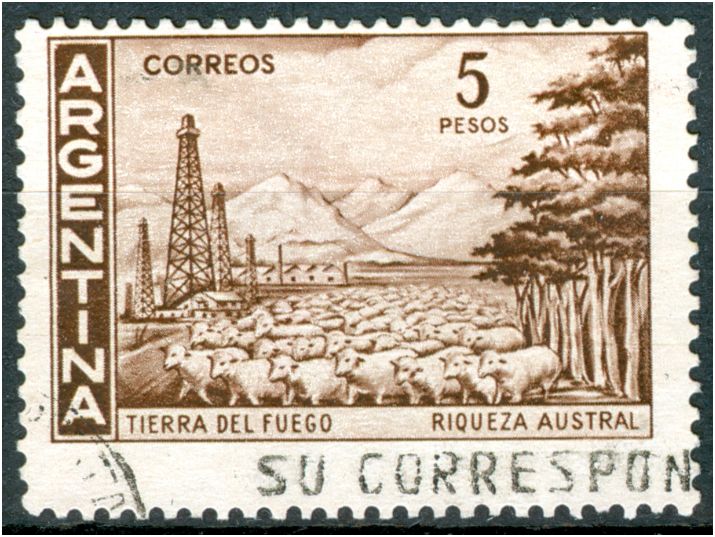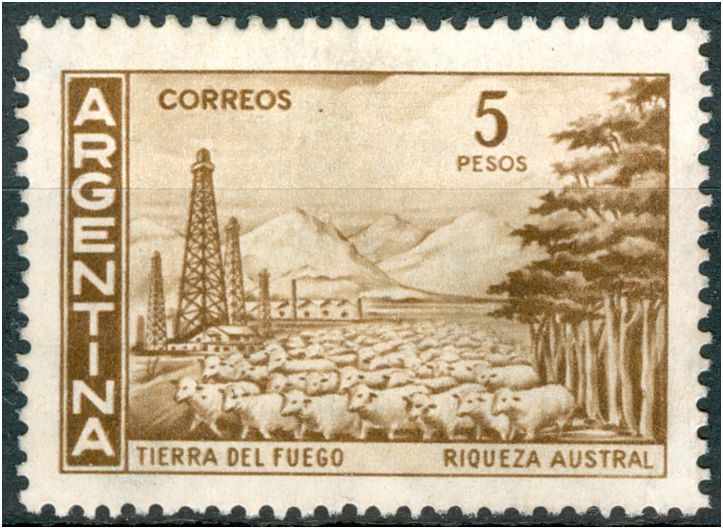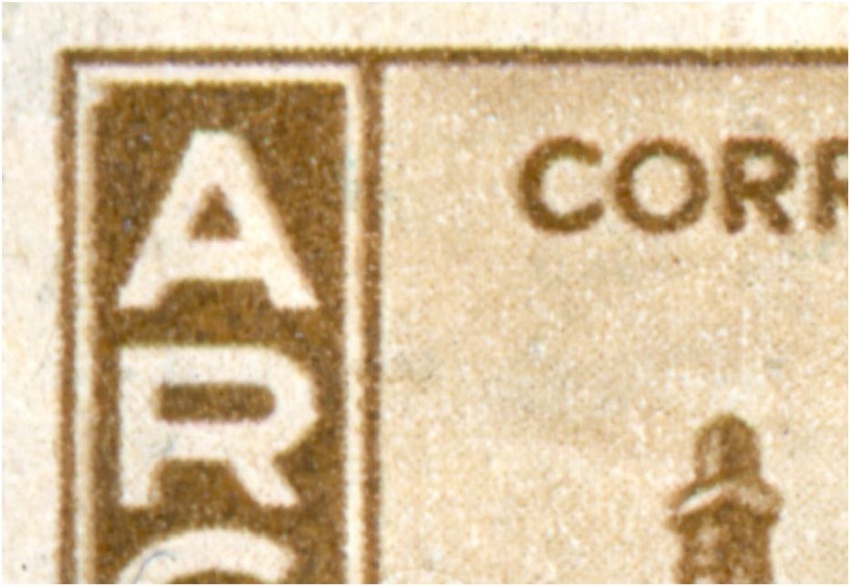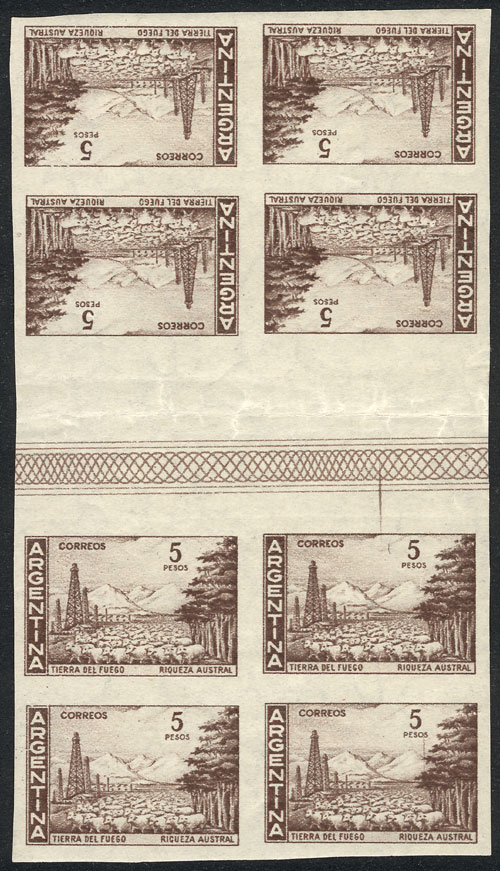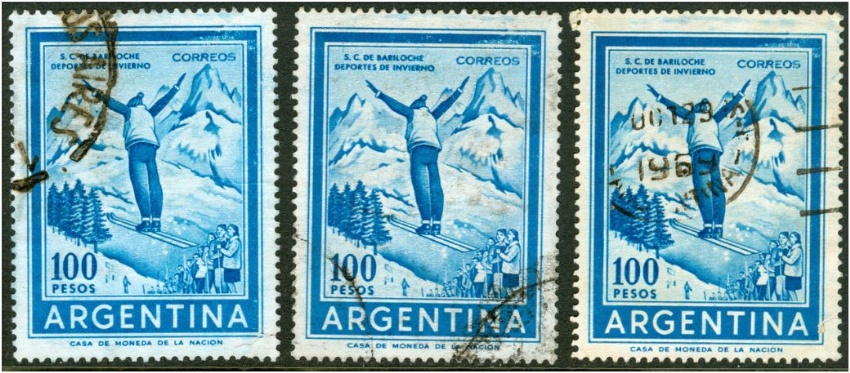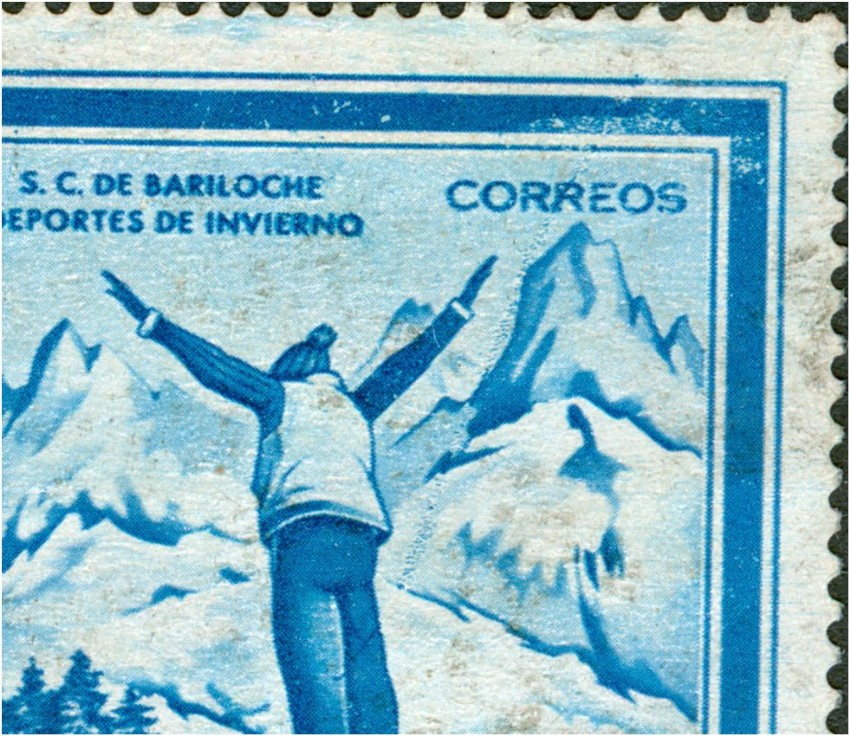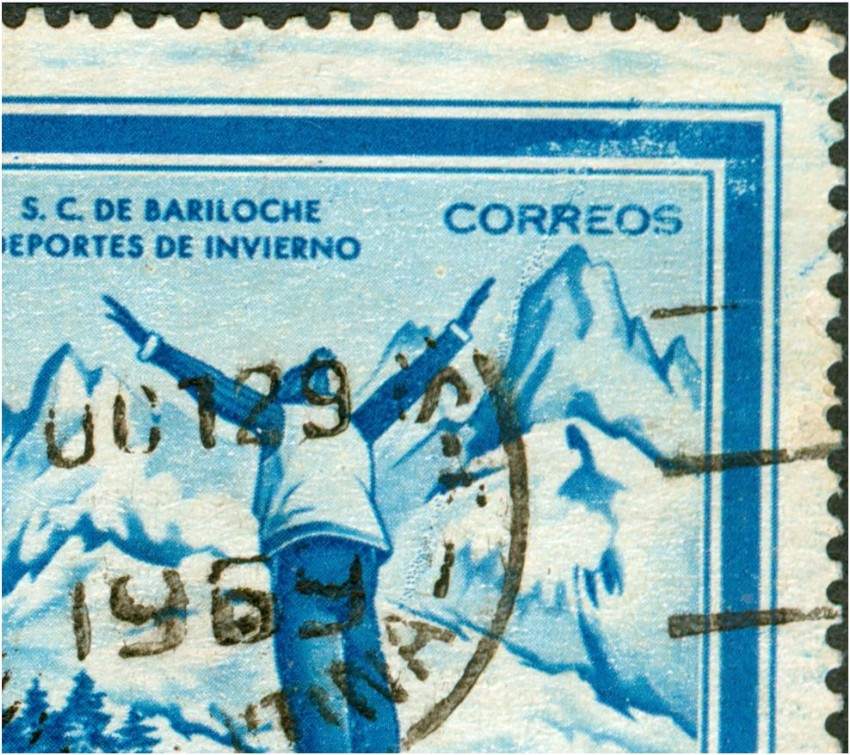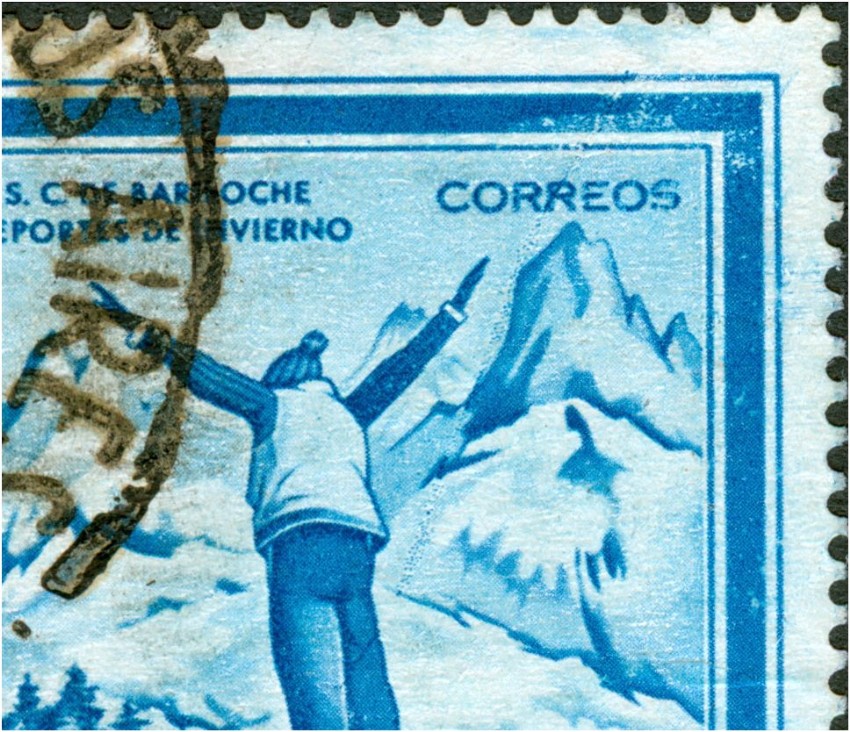|
|
|
|
|
|
|
| nummer / number |
waarde / denomination |
beschrijving / description |
kleur / colour |
afbeelding / illustration |
|
|
|
|
|
|
|
|
|
|
|
|
|
|
|
|
|
|
|
|
|
|
|
|
|
rasterdiepdruk / photogravure / huecograbado |
rechthoekig, liggend / oblong, landscape size: |
|
|
|
|
|
|
|
|
|
|
| 1958_land_01 |
3p |
Catamarca - cuesta de Zapata |
blauw / blue / azul |
 |
|
|
|
11.11.1958 |
|
|
 |
|
|
|
a |
orthogonaal watermerk, symmetrisch / orthogonal watermark, symmetrical / filigrana ortogonal ; papierrichting / direction of paper / eje de enrollamiento ↔ Zárate |
|
 |
|
|
|
b |
orthogonaal watermerk, symmetrisch / orthogonal watermark, symmetrical / filigrana ortogonal ; papierrichting / direction of paper / eje de enrollamiento ↕ Zárate |
|
 |
|
|
|
|
|
|
|
|
|
| 3p |
Catamarca, cuesta de Zapata.. blue - azul |
605 MN 17.02.1960 |
|
|
|
|
|
|
605a TIZ |
|
|
|
|
|
|
MN - MT ; SN - FM (azul oscuro) ; SN - FF (azul claro) |
|
|
|
|
|
|
|
|
|
|
|
| 1958_land_02 |
5p . |
Tierra del Fuego - type I |
grijsbruin / grey-brown / pardo |
 |
|
|
|
04.10.1959 |
|
|
 |
|
|
|
|
|
|
|
|
|
|
a |
orthogonaal watermerk, symmetrisch / orthogonal watermark, symmetrical / filigrana ortogonal ; papierrichting / direction of paper / eje de enrollamiento ↔ Zárate |
|
 |
|
|
|
b |
orthogonaal watermerk, symmetrisch / orthogonal watermark, symmetrical / filigrana ortogonal ; papierrichting / direction of paper / eje de enrollamiento ↕ Zárate |
|
 |
|
|
|
|
|
|
|
|
|
| 1958_land_03 |
5p . |
Tierra del Fuego - type II |
grijsbruin / grey-brown / pardo |
 |
|
|
|
04.10.1959 |
|
|
 |
|
|
|
|
|
|
|
|
|
|
|
|
|
|
|
|
| 1958_land_04 |
5p . |
Tierra del Fuego - type III - Goebel |
grijsbruin / grey-brown / pardo |
 |
|
|
|
xx.02.1970 |
|
|
 |
|
|
|
|
|
|
|
|
|
| 5p |
Tierra del Fuego grey-brown -pardo |
606 MN 04.10.1959 |
|
|
|
|
|
|
606a TIZ 37.5 |
|
|
|
|
|
|
606b MI 37.5 |
|
|
|
|
|
dark grey-brown |
834 (CdM) SN 37.5 xx.05.1968 |
|
|
|
|
|
|
|
|
|
|
|
|
|
|
|
|
|
|
|
|
rasterdiepdruk / photogravure / huecograbado |
rechthoekig, staand / oblong, portrait size: |
|
|
|
|
|
|
|
|
|
|
|
|
|
|
|
|
|
| 1958_land_05 |
10p . |
Mendoza puente del Inca |
roodbruin / red-brown / castaño |
 |
|
|
|
01.07.1960 |
|
|
 |
|
|
|
|
|
|
|
|
|
|
a |
orthogonaal watermerk, symmetrisch / orthogonal watermark, symmetrical / filigrana ortogonal ; papierrichting / direction of paper / eje de enrollamiento ↕ Zárate |
|
 |
|
|
|
b |
orthogonaal watermerk, symmetrisch / orthogonal watermark, symmetrical / filigrana ortogonal ; papierrichting / direction of paper / eje de enrollamiento ↔ Zárate |
|
 |
|
|
|
|
|
|
|
|
|
|
|
|
|
|
|
|
|
|
|
|
|
|
|
| 10p |
Mendoza, puente del Inca red-brown - castaño rojizo |
|
|
|
|
|
|
|
606A MN 01.07.1960 |
|
|
|
|
|
|
606Aa TIZ |
|
|
|
|
|
|
|
|
|
|
|
| 1958-06 |
12p . |
Quebracho colorado |
karmijinbruin / carmine-brown / |
 |
|
|
|
31.10.1962 |
|
|
 |
|
|
|
|
|
|
|
|
|
|
MN 31.10.1962 |
|
|
|
|
|
|
|
|
|
|
|
|
| 1958-07 |
20p . |
Lago Nahuel Huapi |
ultramarijn /ultramarine / |
 |
|
|
|
11.11.1958 |
|
|
 |
|
|
|
|
|
|
|
|
|
| 20p |
Lago Nahuel Huapi ultramarine |
606C MI 15.12.1960 |
|
|
|
|
|
|
606Ca TIZ |
|
|
|
|
|
|
606Cb MN |
|
|
|
|
|
|
|
|
|
|
|
| 1958-09 |
23p . |
Quebracho colorado |
grijsgroen / grey-green / verde gris / |
 |
|
|
|
15.06.1965 |
|
|
 |
|
|
|
|
|
|
|
|
|
|
|
|
|
|
|
|
|
|
|
|
|
|
|
| 23p |
Quebracho colorado grey-green |
707 MN 15.06.1965 |
|
|
|
|
|
|
707a MI |
|
|
|
|
|
|
707b TIZ/TV |
|
|
|
|
|
|
|
|
|
|
|
| 1958-10 |
25p . |
Quebracho colorado |
violet / violet / violeta |
 |
|
|
|
27.07.1966 |
|
|
 |
|
|
|
|
|
|
|
|
|
| 25p |
Quebracho colorado violet |
733 TIZ 27.07.1966 |
|
|
|
|
|
|
|
|
|
|
|
|
|
Rasterdiepdruk / photogravure / huecograbado |
rechthoekig, staand, groot formaat / oblong, landscape size, large size |
|
|
|
|
|
|
|
|
|
|
|
|
|
|
|
|
|
| 1958-13 |
100p |
Wintersport - Bariloche - Esquiador |
blauw / blue / azul |
 |
|
|
|
12.06.1961 |
|
|
 |
|
|
|
|
|
|
|
|
|
| 100p |
Wintersport |
|
|
|
|
|
|
- Bariloche, esquiador blue -azul claro |
606E TIZ 12.06.1961 |
|
|
|
|
|
|
606Ea MN |
|
|
|
|
|
|
606Eb SN |
|
|
|
|
|
|
835 (CdM) xx.06.1969 |
|
|
|
|
|
|
870A (sin fil) xx.05.1971 |
|
|
|
|
|
|
|
|
|
|
|
| 1958-14 |
300p |
Mar del Plata |
violet / violet / violeta |
 |
|
|
|
05.02.1962 |
|
|
 |
|
|
|
|
|
|
|
|
|
| 300p |
Mar del Plata violet - violeta |
606F TIZ 05.02.1962 |
|
|
|
|
|
|
606Fa TIZI doorzichtig |
|
|
|
|
|
|
606Fb TIZN/SN |
|
|
|
|
|
|
|
|
|
|
|
|
|
plaatdruk / recess / grabado/calcografia |
rechthoekig / groot, staand / large, portrait size: |
|
|
|
|
|
|
|
|
|
|
| 1958-15 |
500p |
Hert / Deer (RA) |
groen / green verde |
 |
|
|
|
|
|
|
|
|
|
| 1958-16 |
1000p |
Zalmforel / Salmon trout (RA) |
staalblauw / steel-blue / azul acero |
 |
|
|
|
|
|
|
|
|
|
|
offset / offset-litho / litografiado |
|
|
|
|
|
|
|
|
|
|
|
|
|
|
|
|
|
|
|
| 1958-21 |
1p . |
Zonnebloem / Sunflower / Girasol |
grijsbruin / grey-brown / pardo gris |
 |
|
|
|
xx.xx.196x |
|
|
 |
|
|
|
|
|
|
|
|
|
| 1p |
Girasol grey-brown - pardo gris |
604Ac (offset) MN |
|
|
|
|
|
|
|
|
|
|
|
| 3p |
Catamarca, cuesta de Zapata.. blue - azul |
889 (offset; sin) SN 30.04.1971 |
|
|
|
|
|
889a (offset; RA) SN |
|
|
|
|
|
|
|
|
|
|
|
|
|
|
|
|
|
|
|
| 10p |
Mendoza, puente del Inca red-brown - castaño rojizo |
|
|
|
|
|
|
|
890 (offset; sin fil.) SN 30.04.1971 |
|
|
|
|
|
|
890a (offset; RA) SN |
|
|
|
|
|
|
|
|
|
|
|
| 12p |
Quebracho colorado carmine-brown |
694 (offset) MN xx.07.1964 |
|
|
|
|
|
|
|
|
|
|
|
| 25p |
Quebracho colorado violet |
733a (offset) MN xx.xx.1967 |
|
|
|
|
|
|
|
|
|
|
|
































